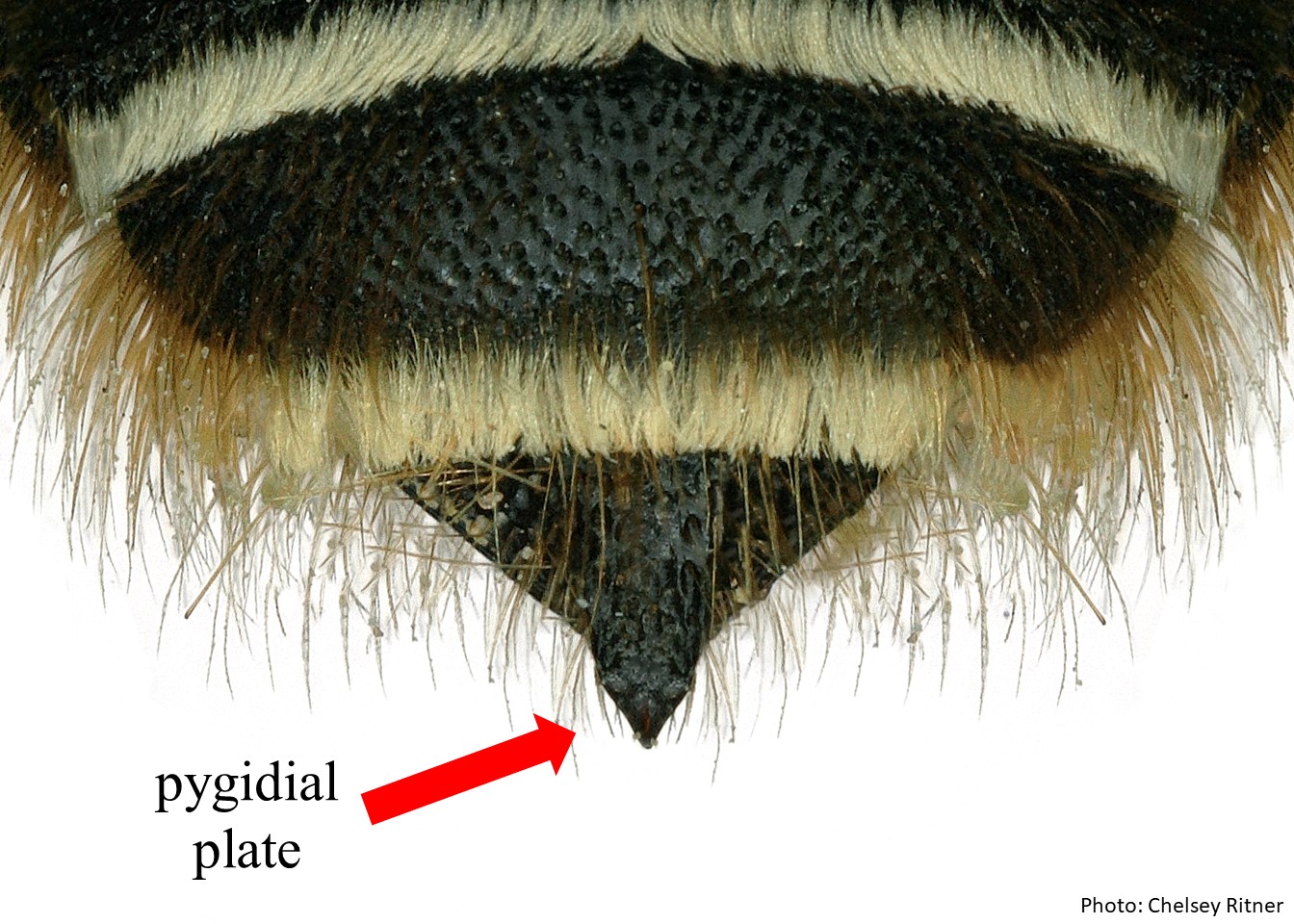Xylocopa (Gnathoxylocopa) is monotypic and are small bees, 10 – 15 mm in length, semi-slender, with black, weakly metallic, integumentintegument:
a tough, protective outer layer
. They have thick, almost entirely pale, pubescencepubescence:
short, fine hair
and amber to brown colored wings with weak iridescence (Hurd and Moure 1963Hurd and Moure 1963:
Hurd, P.D. and J.S. Moure. 1963. A Classification of the Large Carpenter Bees (Xylocopine) (Hymenoptera: Apoidea). University of California Publications in Entomology (Vol. 29). Berkeley and Los Angeles: University of California Press, 365 pp.).
Xylocopa (Gnathoxylocopa) contains only one species, Xylocopa sicheli (Hurd and Moure 1963Hurd and Moure 1963:
Hurd, P.D. and J.S. Moure. 1963. A Classification of the Large Carpenter Bees (Xylocopine) (Hymenoptera: Apoidea). University of California Publications in Entomology (Vol. 29). Berkeley and Los Angeles: University of California Press, 365 pp.; Michener 2007Michener 2007:
Michener, C.D. 2007. The Bees of the World (2nd ed.). Johns Hopkins University Press, Baltimore and London, 953 pp.).
Xylocopa (Gnathoxylocopa) can be found from the southern tip of Africa up to Namibia and Zimbabwe (Michener 2007Michener 2007:
Michener, C.D. 2007. The Bees of the World (2nd ed.). Johns Hopkins University Press, Baltimore and London, 953 pp.).

Distribution map generated by Discover Life -- click on map for details, credits, and terms of use.
Xylocopa (Gnathoxylocopa) is a generalist pollinator and has been recorded visiting the flowers of a number of plant families including: Acanthaceae, Aizoaceae, Asphodelaceae, Asteraceae, Cleomaceae, Codonaceae, Crassulaceae, Fabaceae, Lamiaceae, and Zygophyllaceae (Eardley and Coetzer 2016Eardley and Coetzer 2016:
Eardley C. and W. Coetzer. 2016. Xylocopa sicheli Vachal, 1898, Catalogue of Afrotropical Bees. Version 1.6. Agricultural Research Council. https://doi.org/10.15468/u9ezbh.).
(modified from Hurd and Moure 1963Hurd and Moure 1963:
Hurd, P.D. and J.S. Moure. 1963. A Classification of the Large Carpenter Bees (Xylocopine) (Hymenoptera: Apoidea). University of California Publications in Entomology (Vol. 29). Berkeley and Los Angeles: University of California Press, 365 pp.)
 with subapicalsubapical:
with subapicalsubapical:Xylocopa (Gnathoxylocopa) is most similar to X. (Rhysoxylocopa). Females can be easily distinguished from all other subgenera by the unique curved hook on the lower margin of the mandibles. Males can be distinguished from X. (Rhysoxylocopa) by their much broader face.
Xylocopa (Gnathoxylocopa) is only known to nest in the green stalks of Aloe. It has a hook on the lower margin of each mandiblemandible:
bee teeth, so to speak, usually crossed and folded in front of the mouth that is designed to be used on the soft pith of Aloe (Hurd and Moure 1963Hurd and Moure 1963:
Hurd, P.D. and J.S. Moure. 1963. A Classification of the Large Carpenter Bees (Xylocopine) (Hymenoptera: Apoidea). University of California Publications in Entomology (Vol. 29). Berkeley and Los Angeles: University of California Press, 365 pp.). They also do not make branching nests, even if there is adequate space for branches (Watmough 1973Watmough 1973:
Watmough, R. H. 1973. Biology and Behavior of Carpenter Bees in Southern Africa. Plant Protection Research Institute, Pretoria 37(2): 261-281.).
There are no known invasives.
Eardley C. and W. Coetzer. 2016. Xylocopa sicheli Vachal, 1898, Catalogue of Afrotropical Bees. Version 1.6. Agricultural Research Council. https://doi.org/10.15468/u9ezbh.
Hurd, P.D. and J.S. Moure. 1963. A Classification of the Large Carpenter Bees (Xylocopine) (Hymenoptera: Apoidea). University of California Publications in Entomology (Vol. 29). Berkeley and Los Angeles: University of California Press, 365 pp.
Michener, C.D. 2007. The Bees of the World (2nd ed.). Johns Hopkins University Press, Baltimore and London, 605 pp.
Watmough, R. H. 1973. Biology and Behavior of Carpenter Bees in Southern Africa. Plant Protection Research Institute, Pretoria 37(2): 261-281.